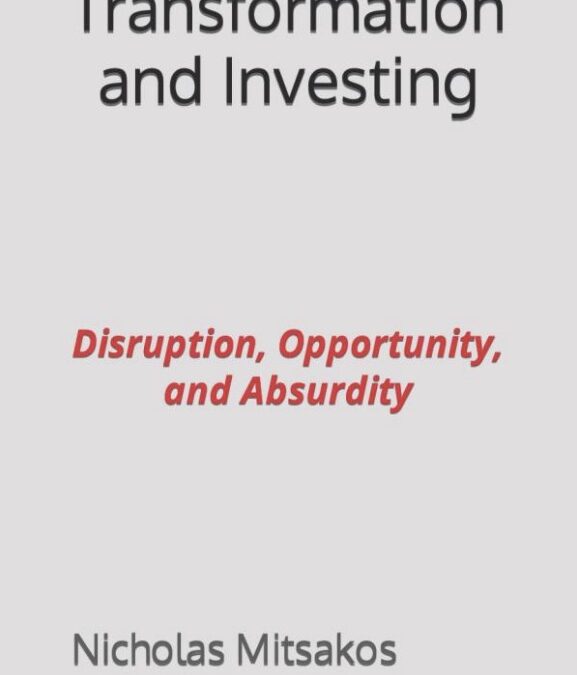Transformational Investing: Opportunity, Absurdity, and Terror highlights the extraordinary opportunities and risks associated with disruptive technologies and the global transformation they are causing. Instead of headline-grabbing hyperbole, I attempt to create a context to understand these developments – a broader, methodical, and disciplined way to think about disruption and transformation.
Transformation and Investing: Disruption, Opportunity, and Absurdity
Some of the world’s most important industries are being profoundly impacted by new technological innovation and platforms, such as artificial intelligence, digital assets, blockchain-based businesses, gene editing, and DNA sequencing, enabling unprecedented disruption to business and economic models.
Investment success requires not only understanding these impacts but also grasping many other economic forces and elements ranging from global economics, game theory, competitive and microlevel analysis, as well as human behavior and emotions.
Stable predictability is increasingly anachronistic. Every company or industry will either be a disrupter or disrupted. The leading growth companies of today stand an excellent chance to be memories tomorrow.
This new world makes stability and a static competitive advantage less relevant. Looking for “moats” is becoming a fool’s errand. Investing will require more technological expertise, knowledge of major developments, and an understanding of the accelerating impact permeating the world’s economy.
The factors that influence any investment’s true value are beyond a simple formula. Extraordinary returns are generated by a combination of factors beyond what the market understands. The total of all market decisions does not create an understanding of the future value of any investment. It is a static snapshot and passive investing works for passive decisions but is a flawed tool for any active decision-maker.
This book discusses topics ranging from disruptive innovation and technologies, globalization, leadership, fiscal and monetary policy, and other topics usually relegated to economics or behavioral textbooks. But, inferior performance comes from not understanding all the elements, macro, and micro, that influence investment choices, the policies impacting those decisions, the competitive environment, and management’s leadership qualities essential to outperform.
This book also avoids general statements (“invest in creative destruction,” “disruption and transformation will create wealth”) that sound good, tend to be popular, but are meaningless. I am much more concerned with how to think about a problem and develop a unique and better decision.
Specific situations are dynamic and quickly escape a simple formula or any broad sweeping conclusions. General statements are a waste of time, profoundly inefficient and misleading, and designed simply to make the reader feel good without giving him or her any useful way to think more deeply about analysis and conclusions that matter.
This is not a “how to pick stocks” book. Along with platitudes, there are no simple formulas or any other effortless way to outperform the market. Deep thinking about the factors that matter is complex, challenging, unique to each situation, and escapes simplicity.
This book is not organized as a straightforward narrative, but in discrete sections addressing different topics. The contents are a combination of a series of articles and lectures and can seem fragmented. But each topic and subtopic is meant to stand on its own. It can just as effectively be read in different chunks and not in any narrative series. It can be a reference book, as well as a descriptive analysis.

